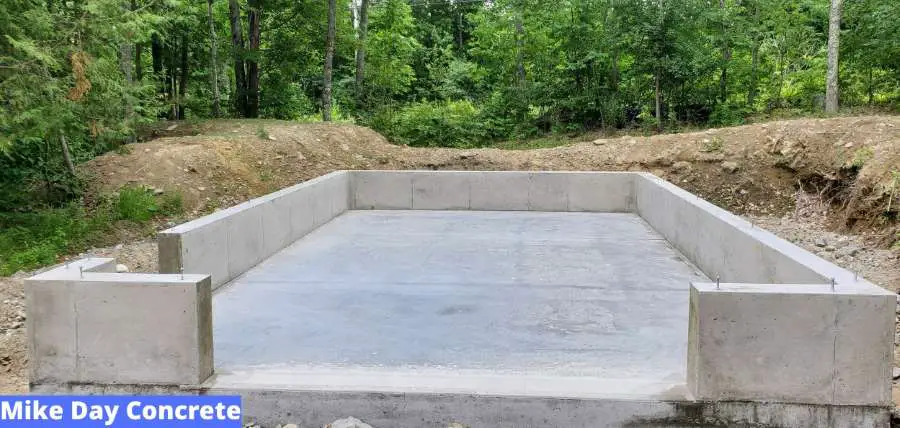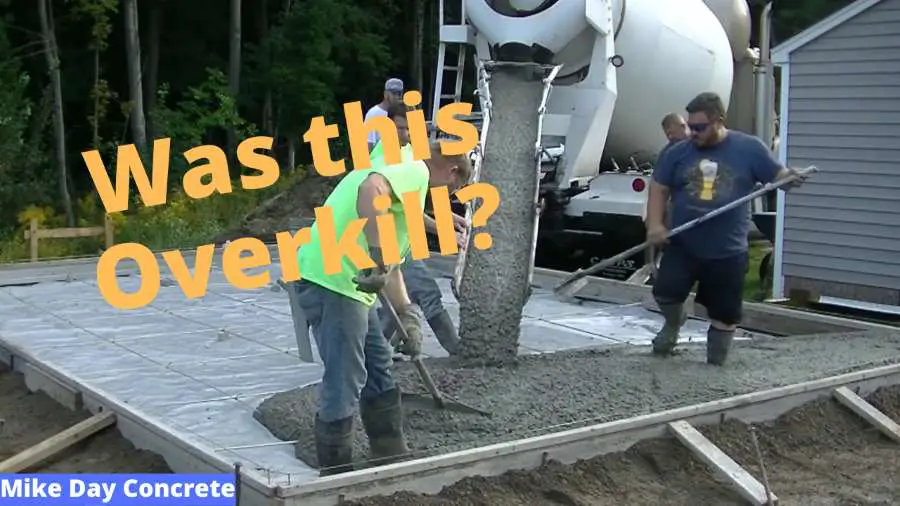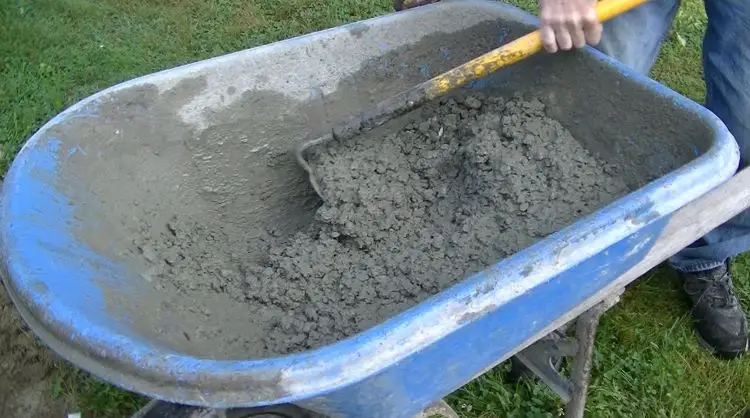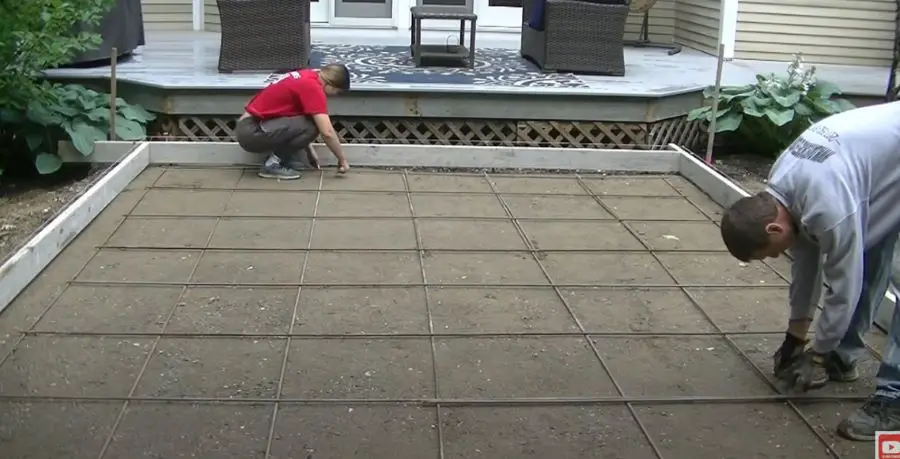rebar in a concrete slab: expert tips for a stronger slab
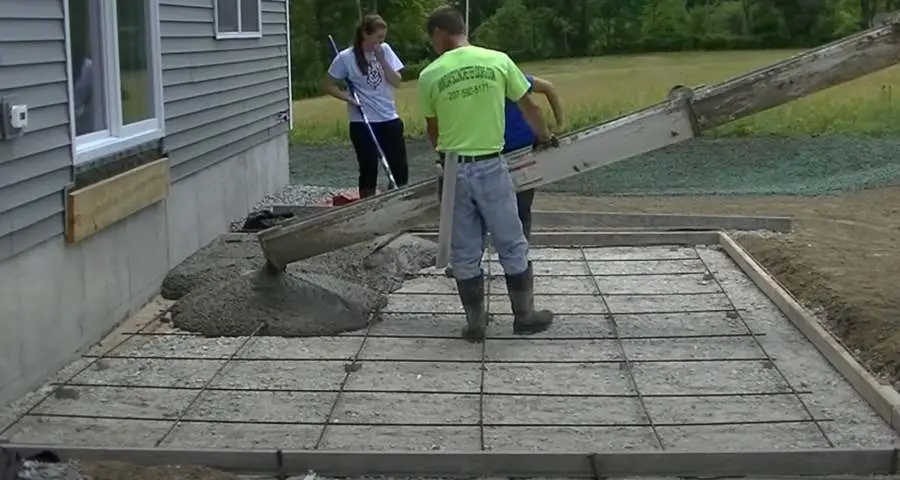
Have you ever wondered if you need rebar in a concrete slab, or how to place it and space it properly? In this easy-to-understand article, I'll answer all these questions, guiding you through the ins and outs of rebar in concrete slabs.
By the time you finish reading, you'll know whether you need rebar in your concrete slab, how it should be placed, the proper spacing of the rebar, and other important information that helps create strong concrete slabs.
So, join me as we dive into the fascinating world of rebar reinforcement and uncover the secrets to building sturdy and durable reinforced concrete slabs!
is rebar needed in a concrete slab?
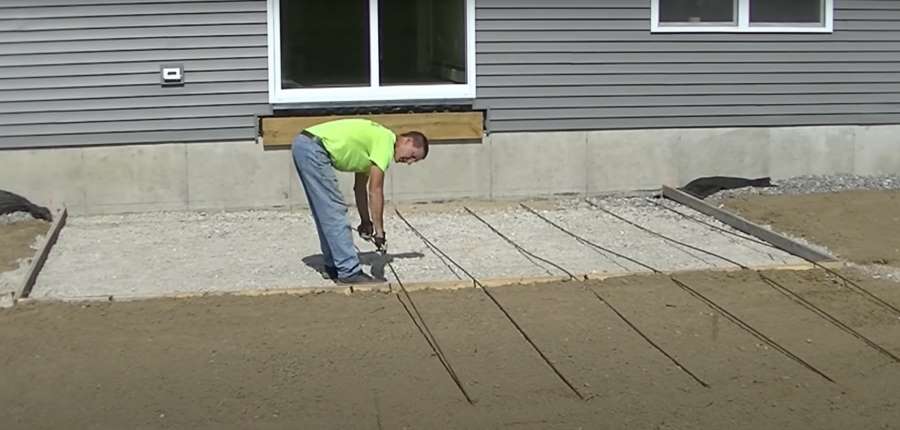
Rebar is not always needed in a concrete slab, but it is commonly used to provide reinforcement and improve the overall strength and durability of the slab.
The decision to use reinforcing bar depends on factors such as the size of the slab, its intended use, the type of load it will bear, and local building codes.
Rebar in concrete is essential when a slab is expected to support heavy loads or resist stresses caused by factors such as temperature changes, ground movement, or shrinkage. It helps distribute the load evenly across the slab, reducing the risk of cracking and structural failure.
There are other options for reinforcement in concrete slabs, including:
- Fiber reinforcement: Synthetic or steel fibers can be mixed into the concrete to provide increased tensile strength and reduce the risk of cracking. This method is often used for slabs that will experience light to moderate loads or in combination with rebar for added strength.
- Welded Wire mesh: A grid of steel wires can be used as an alternative to rebar, providing similar reinforcement benefits. Wire mesh is typically used in thinner slabs and for projects with a tight budget, as it is generally more affordable than rebar.
- Post-tensioning: This method involves placing steel tendons (cables) within the concrete slab, which are then tensioned after the concrete has hardened. This compresses the concrete, providing additional strength and resistance to cracking.
- Structural synthetic fibers: These fibers are designed to provide a higher level of reinforcement than standard fibers, making them suitable for slabs that will experience significant loads or stresses.
Ultimately, your choice of reinforcement for a concrete slab will depend on factors such as your slab's thickness, whether you are parking heavy trucks or heavy machinery on it, your budget, and local building codes.
rebar in concrete slab spacing
The spacing of rebar in a slab plays a crucial role in determining its strength and overall performance. Proper spacing ensures the slab can withstand the applied loads and resist cracking.
Rebar spaced closer in a grid pattern, provides increased strength and stiffness to the concrete slab, while larger rebar grid spacing may result in a more flexible slab with reduced load-carrying capacity.
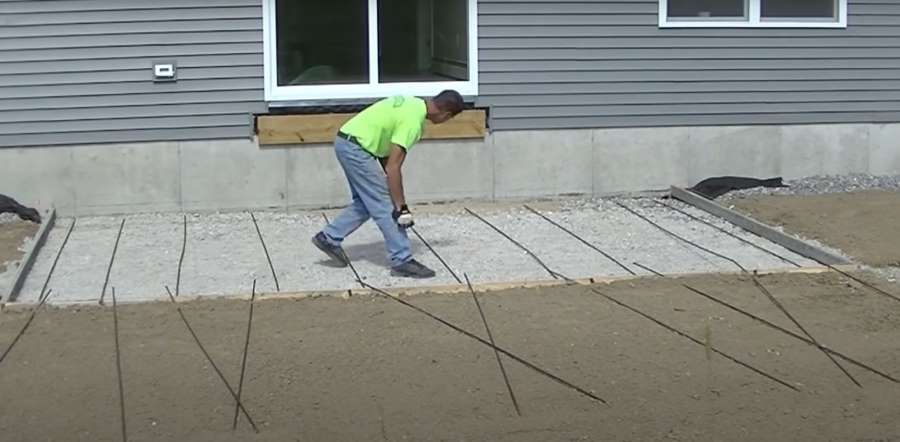
closer spacing of rebar in a slab
- Provides better load distribution across the slab.
- Enhances crack resistance.
- Increases the slab's overall structural integrity.
- Offers better resistance to bending and shear forces.
larger spacing of rebar in a slab
- Reduces material and labor costs.
- Increased risk of cracking.
- This may result in reduced load-carrying capacity.
- Lower overall structural integrity
The ideal spacing for rebar in a concrete slab depends on factors such as the slab thickness, the type of load it will support, and local building codes.
As a general guideline, the following rebar spacing can be considered for different slab thicknesses:
- Reinforcing concrete for a 4-inch thick concrete slab: For a 4-inch thick slab, #3 (3/8-inch diameter) or #4 (1/2-inch diameter) rebar is typically used. The ideal spacing for these bars is around 18 to 24 inches on center (from the center of one bar to the center of the next), depending on the expected loads and local building codes.
- Reinforce concrete for a 5-inch thick concrete slab: For a 5-inch thick slab, #4 (1/2-inch diameter) rebar is commonly used. The ideal spacing for these bars is typically around 16 to 20 inches on center, again depending on the expected loads and local building codes.
- Reinforced concrete for a 6-inch thick concrete slab: For a 6-inch thick slab, #4 (1/2-inch diameter) or #5 (5/8-inch diameter) thicker rebar is often used. The ideal spacing of these rebar grids is typically around 12 to 18 inches on center, based on the expected loads and local building codes.
It is crucial to consult with a qualified engineer or contractor to determine the appropriate rebar size and spacing for your specific project, taking into account factors such as the slab's intended use, the type of load it will support, and any applicable building codes or regulations.
where is the best placement of rebar in a concrete slab
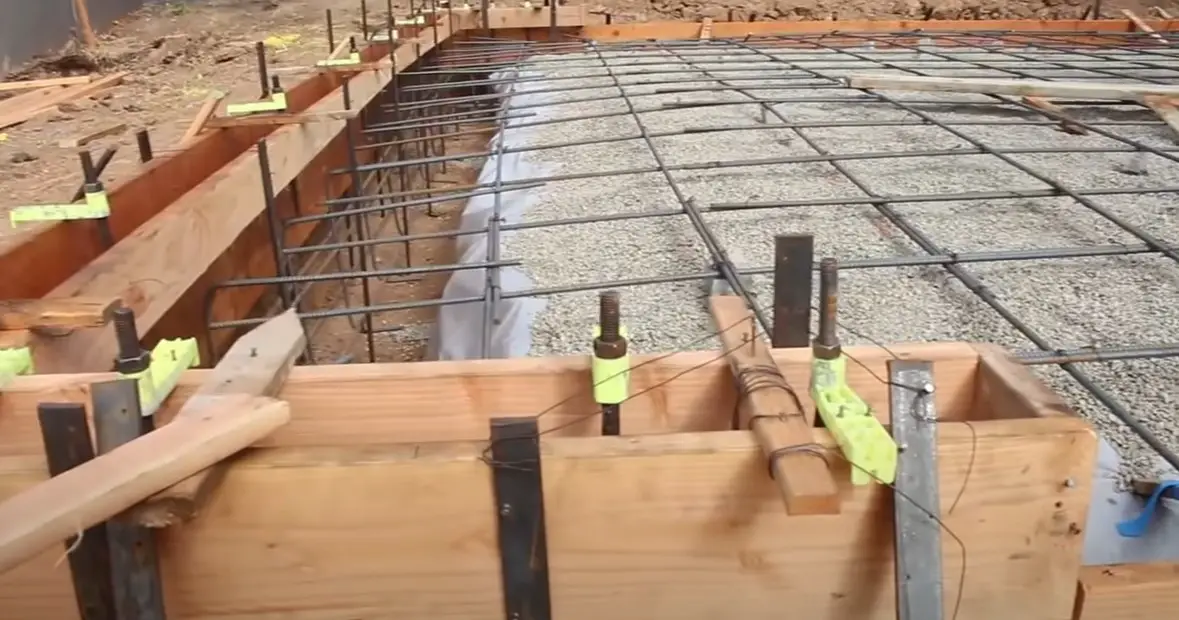
The placement of concrete rebar reinforcement is crucial for ensuring the slab's structural integrity, load-carrying capacity, and resistance to cracking.
Generally, rebar or wire mesh should be placed in the middle of the slab to provide optimal reinforcement, but the exact positioning depends on the specific requirements of the project and the type of loads the slab will be subjected to.
- Middle of the slab: In most cases, placing reinforcing steel in the middle of the slab is ideal. This position helps distribute the loads evenly across the entire depth of the slab, reducing the risk of cracking and providing overall reinforcement against bending and shear forces.
- Top of the slab: In certain situations, such as when the slab is subjected to predominantly compressive forces from above (e.g., foot traffic, vehicles), place rebar closer to the top of the slab. This positioning helps resist the compressive forces more effectively and reduces the risk of the slab cracking under these loads.
- Bottom of the slab: When the slab is subjected to tensile forces from below (e.g., uplift from soil expansion, frost heave), placing the steel rebar closer to the bottom of the slab can help counteract these forces and prevent cracking.
Regarding the placement of concrete rebar from the edges of the slab, it is essential to maintain a proper distance to prevent corrosion and ensure adequate concrete cover.
The concrete cover protects the rebar from exposure to moisture and chemicals, reducing the risk of corrosion and maintaining the long-term integrity of the reinforcement.
A common rule of thumb is to maintain a minimum concrete cover of at least 2 inches from the edges of the slab for floor slabs exposed to weather and 1.5 inches for slabs not exposed to the weather. Local building codes may have specific requirements for concrete cover that should be adhered to.
types of concrete rebar reinforcement
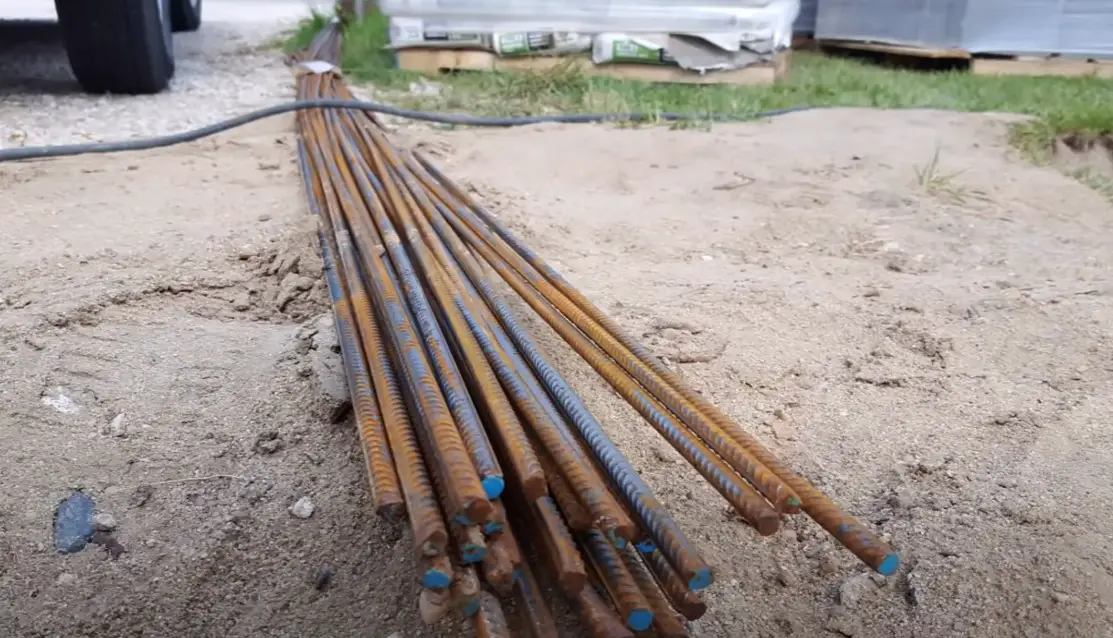
Rebar, short for reinforcing bar, is available in various types and materials, each with unique properties that make them suitable for specific applications. The main types of rebar used to strengthen concrete slabs include:
- Carbon Steel Rebar: This is the most common type of reinforcing bar used in concrete structures. Carbon steel rebar offers a good balance of strength, durability, and affordability. It is typically available in various grades, such as Grade 40, Grade 60, and Grade 75, each with different tensile strength and yield strength properties.
- Welded Wire Fabric (WWF) or Sheet Metal Reinforcing Bars: This type of reinforcement consists of a grid of steel wires welded together at their intersections. Welded wire mesh is commonly used in thinner slabs or as a cost-effective alternative to rebar. WWF provides similar reinforcement benefits and is available in various wire sizes and spacings.
- Stainless Steel Rebars: This type of reinforcing steel offers superior corrosion resistance compared to carbon steel rebar, making it ideal for use in concrete projects exposed to harsh environments, such as marine or coastal applications. However, stainless steel rebar is more expensive than carbon steel rebar.
- Epoxy-Coated Rebars: Epoxy-coated rebar is a carbon steel rebar coated with a layer of epoxy. The epoxy coating provides additional protection against corrosion, making it suitable for concrete slabs expected to have increased exposure to moisture, chemicals, or deicing salts. This type of rebar reinforcement is more expensive than uncoated carbon steel rebar but less expensive than stainless steel rebar.
- Galvanized Rebar: Galvanized rebar is a carbon steel rebar coated with a layer of zinc. The zinc coating provides protection against corrosion, making it suitable for use in corrosive environments. Galvanized rebar is more expensive than uncoated carbon steel rebar but typically less expensive than epoxy-coated rebars or stainless steel rebar.
- Fiber-Reinforced Polymer (FRP) Rebar: FRP rebar is made from composite materials such as fiberglass, carbon fiber, or basalt fiber. This type of rebar reinforcement is non-corrosive, lightweight, and offers high tensile strength. However, it is more expensive than traditional steel rebar and may require special handling and installation techniques.
rebar spacing for 4-inch slab
The ideal concrete rebar spacing for a 4-inch concrete slab depends on the intended use of the slab, the type of load it will support, and local building codes.
Generally, for a 4-inch slab, #3 (3/8-inch diameter) or #4 (1/2-inch diameter) rebar is used. Let's examine the benefits and impact on the slab's strength for 12", 18", and 24" rebar spacings.
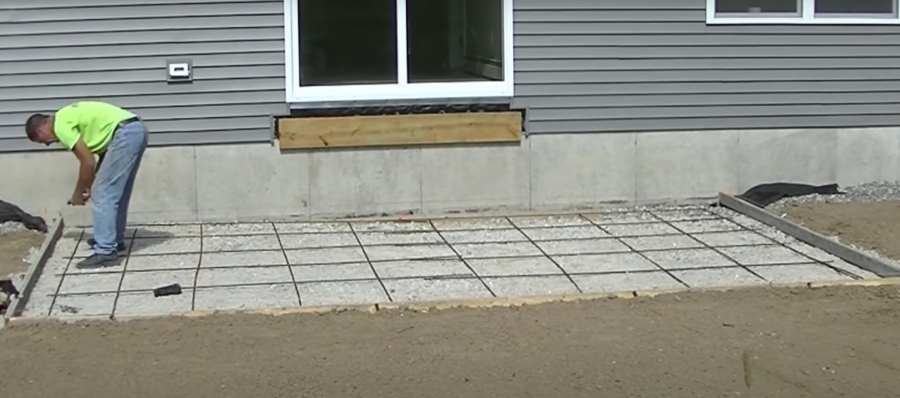
Rebar grids at 12-inch spacing:
- Increased load-carrying capacity: Closer rebar spacing helps distribute loads more evenly across the slab, enhancing its ability to support heavy loads and reducing the risk of surface cracks or structural failure.
- Improved crack resistance: A denser rebar grid minimizes the risk of cracking due to factors such as shrinkage, temperature changes, and ground movement.
- Enhanced resistance to bending and shear forces: With rebar spaced more closely, the slab gains better resistance to bending and shear tension forces, maintaining its integrity under various stress conditions.
- Increased overall structural integrity: A 12-inch rebar spacing provides better overall structural integrity to the slab, ensuring it remains incredibly strong under various load conditions.
Rebar grids at 18-inch spacing:
- Moderate load-carrying capacity: At this spacing, the slab can still support moderate loads, but the capacity is slightly reduced compared to the 12-inch spacing.
- Balanced crack resistance: An 18-inch rebar spacing offers a balance between cost and crack resistance, providing additional support for most residential and light commercial applications.
- Adequate resistance to bending and shear forces: While not as strong as a 12-inch spacing, the 18-inch spacing still provides greater tensile strength to bending and shear forces for typical slab applications.
- Cost-effective solution: An 18-inch rebar spacing can be a more cost-effective solution for projects with a limited budget, while still providing adequate strength and reinforcement.
Rebar grids at 24-inch spacing:
- Reduced load-carrying capacity: With a larger rebar spacing, the slab's ability to distribute loads evenly decreases, potentially impacting its performance under heavy loads.
- Lower crack resistance: The wider spacing between rebars can result in larger areas of the slab without reinforcement, making it more susceptible to cracks.
- Lower resistance to bending and shear forces: The 24-inch rebar spacing provides less resistance to bending and shear forces compared to the 12-inch and 18-inch spacings, potentially making the slab more vulnerable to cracks.
- Low-Cost Economical solution: A 24-inch rebar spacing can be the most economical option for projects with tight budgets, but it is generally recommended for slabs subjected to light loads and minimal stress conditions.
rebar spacing for 6 inch slab
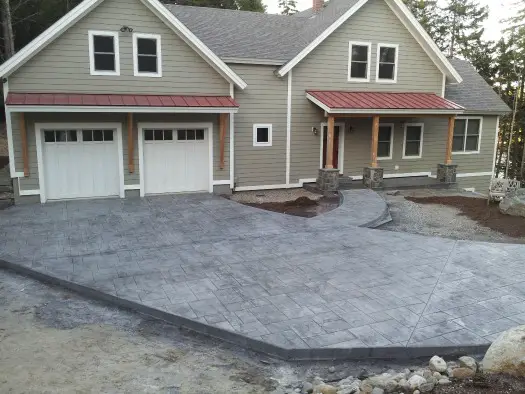
For a 6-inch concrete slab that will be subjected to heavy trucks, large trucks, and equipment, it's crucial to provide added reinforcement to minimize cracks and ensure structural integrity.
In such cases, tighter rebar spacing is recommended. Typically, a rebar spacing of 12 inches on center (from the center of one bar to the center of the next) is suitable for slabs subjected to heavy loads.
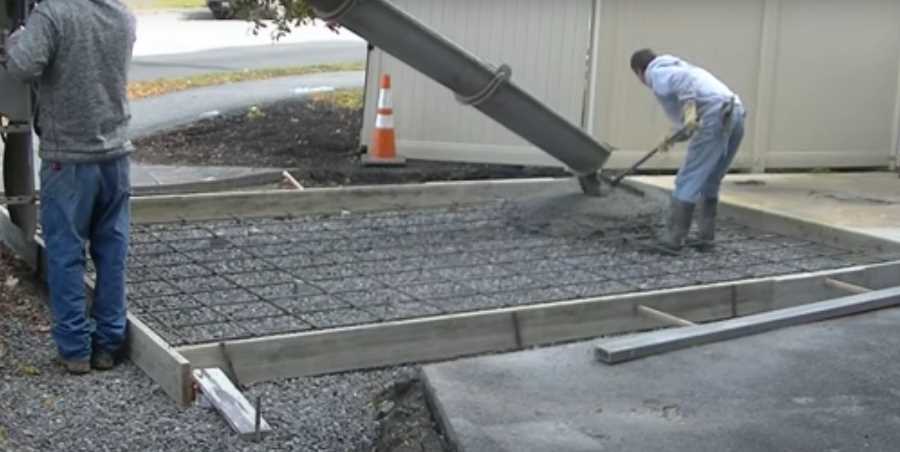
Using a denser rebar grid with 12-inch spacing provides the following benefits:
- Enhanced load-carrying capacity: Closer spacing helps distribute loads more evenly across the slab, reducing the risk of structural failure under heavy loads.
- Improved crack resistance: A denser rebar grid minimizes the risk of cracking due to factors such as shrinkage, temperature changes, and ground movement, which is particularly important for slabs supporting heavy vehicles and equipment.
- Increased resistance to bending and shear forces: With rebar spaced more closely, the slab gains better resistance to bending and shear forces, maintaining its integrity under various stress conditions.
Additionally, consider using a higher-strength concrete mix and a higher grade of rebar to further enhance the slab's performance under heavy loads.
Is It Better To Use Rebar or Wire Mesh in a Concrete Driveway or a Slab
Both rebar and wire mesh can be used as reinforcement when you pour concrete for driveways or slabs, but the choice between the two depends on factors such as the intended use of the slab, the type of load it will support, and the project's budget.
Each option has its advantages and disadvantages:
rebarred concrete:
- Strength: Rebarring concrete provides superior strength and reinforcement, making it ideal for slabs subjected to heavy loads or high-stress conditions.
- Resistance to cracking: Reinforcing bars offers better resistance to cracking due to factors such as shrinkage, temperature changes, and settling due to un-compacted ground.
- Versatility: Rebar can be used in a variety of applications, from residential to commercial projects, and is available in different grades and diameters to suit specific requirements.
- Durability: Rebar is generally more durable than wire mesh, as it is less prone to corrosion and has a higher tensile strength.
wire mesh:
- Cost-effective: Wire mesh is often more affordable than rebar, making it a popular choice for projects with tight budgets or for applications where the poured concrete slab will not be subjected to heavy loads.
- Easy to install: Wire mesh is lightweight and comes in rolls or sheets, making it easier and faster to install compared to rebar.
- Suitable for thinner slabs: Wire mesh is more appropriate for thinner slabs or applications with lower load requirements, as it provides adequate reinforcement without the need for a larger investment in materials and labor.
- Crack control: While not as strong as rebar, wire mesh can still help control cracking in concrete surfaces, particularly for smaller cracks and shrinkage.
In summary, rebar is generally better for driveways and slabs that will be subjected to heavy loads or high-stress conditions, as it provides superior strength and reinforcement.
Wire mesh, on the other hand, is a cost-effective and easy-to-install option for thinner slabs or applications with lower load requirements.
The choice between rebar and sheet metal wire mesh will depend on factors such as the slab's intended use, the type of load it will support, and the project's budget.
what can i use instead of rebar in concrete?
There are several alternatives to rebar that can be used to reinforce a concrete slab. Here are five options and a brief explanation of each:
- Welded Wire Mesh (WWM): Welded Wire Mesh is a prefabricated grid made of steel wires welded together at their intersections. It provides similar reinforcement benefits as rebar and is commonly used in thinner slabs or as a cost-effective alternative. WWM is available in various wire sizes and spacings, making it suitable for different applications.
- Fiber-reinforced concrete: Fiber-reinforced concrete contains short, randomly distributed fibers (made from materials such as steel, glass, synthetic polymers, or natural fibers) that improve the concrete's tensile strength, ductility, and crack resistance. This option is typically used in conjunction with rebar or wire mesh or as a standalone reinforcement method for certain applications, such as pavements, overlays, or smaller slabs.
- Steel fibers: Steel fibers are short, thin steel strands mixed into the concrete to provide additional reinforcement. These fibers help distribute loads more evenly and reduce cracking in the slab. Steel fibers can be used as the primary reinforcement or in combination with other reinforcement materials, depending on the project's requirements.
- Glass Fiber Reinforced Polymer (GFRP) bars: GFRP bars are made from glass fibers embedded in a polymer resin matrix. These bars are non-corrosive, lightweight, and provide high tensile strength. GFRP bars can be used as an alternative to steel rebar in certain applications, particularly where corrosion resistance is crucial or where the lightweight nature of the material is beneficial.
- Carbon Fiber Reinforced Polymer (CFRP) bars: CFRP bars consist of carbon fibers embedded in a polymer resin matrix. They offer high tensile strength, are lightweight, and have excellent corrosion resistance. CFRP bars are often used in applications where high strength-to-weight ratios or resistance to harsh environments are necessary.
in conclusion:
Rebar plays a crucial role in reinforcing concrete slabs, improving their structural integrity and durability.
The use of rebar in a concrete slab ensures that the structure can adequately support the anticipated loads and resist the various forces it may be subjected to, such as bending, shear, and tensile stresses.
Proper rebar placement and spacing are essential in optimizing the performance of the reinforced concrete slab and preventing issues such as cracking, which can compromise the slab's structural integrity over time.
While there are alternative reinforcement options available, such as welded wire mesh, fiber-reinforced concrete, and various types of polymer bars, the choice of reinforcement will depend on the specific requirements of the project, budget, and local building codes.
Each reinforcement option has its advantages and disadvantages, and it is crucial to consult with a qualified engineer or contractor to determine the most appropriate reinforcement method for your particular situation.
Ultimately, the use of rebar in a concrete slab contributes to the creation of a durable and reliable structure that can withstand the test of time.
By carefully considering the intended use of the slab, the type of load it will support, and the specific requirements of the project, you can ensure that the appropriate reinforcement is selected and installed, resulting in a concrete slab that meets the highest standards of performance and longevity.
